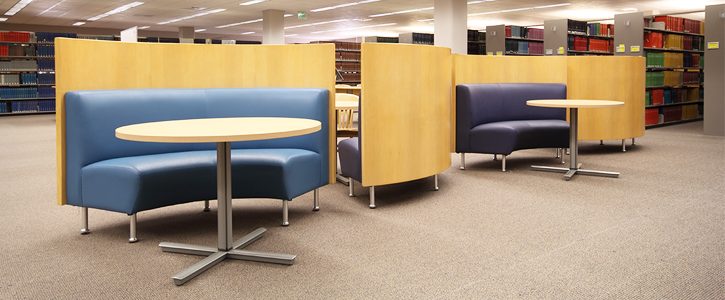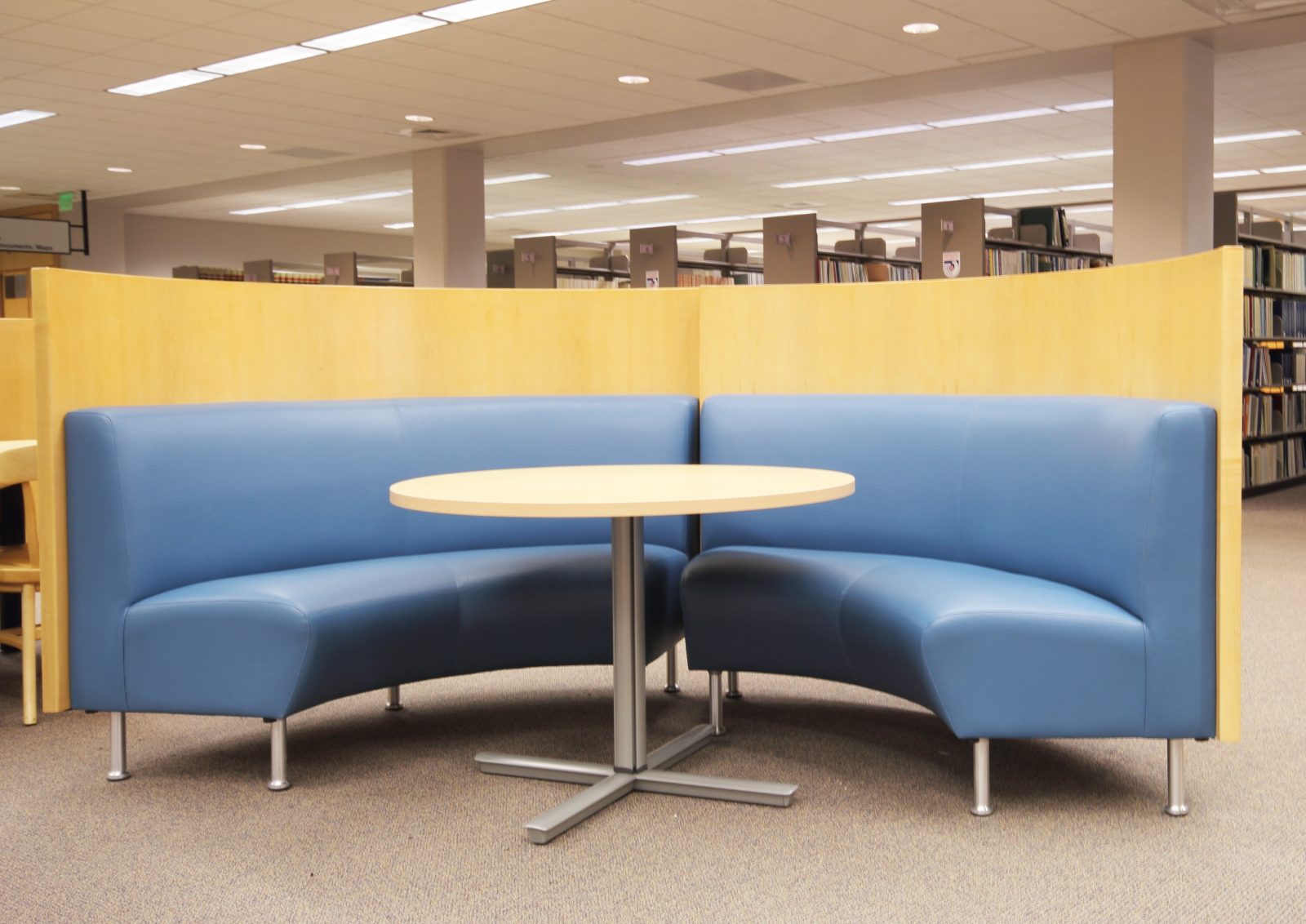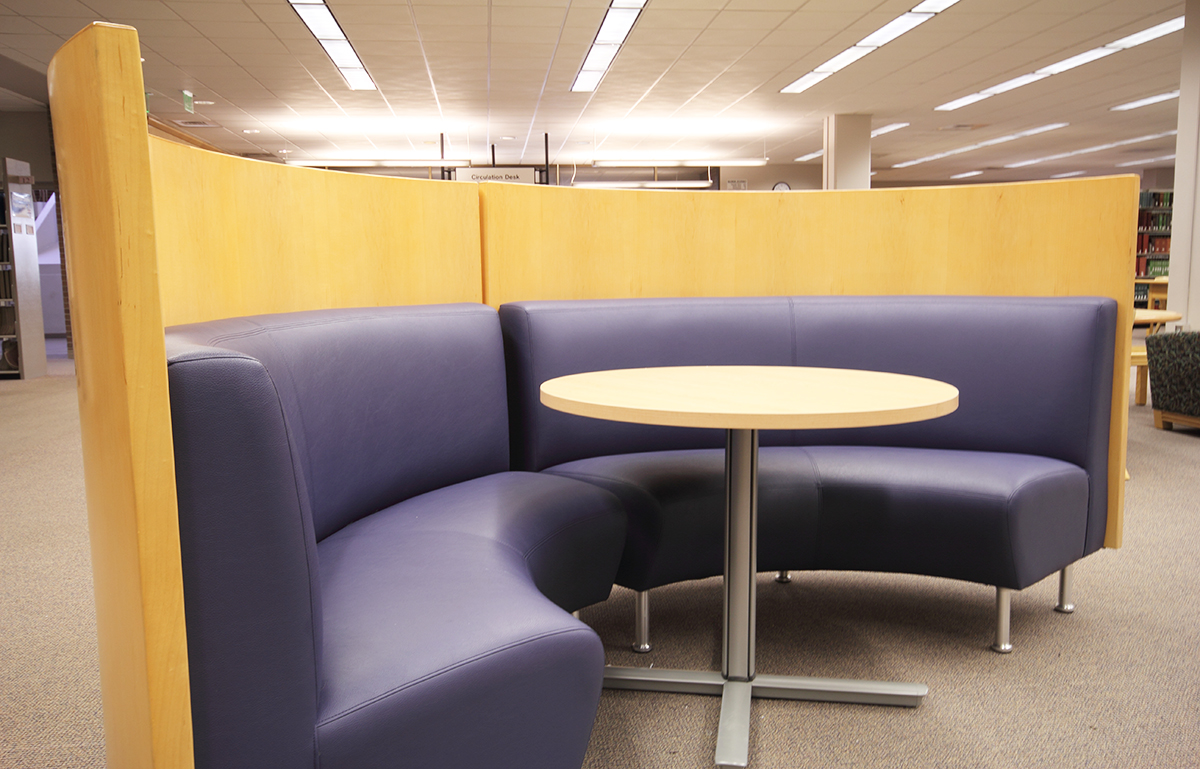
 In this installment of our Stacks Removal series, we discuss what happens during an actual renovation. We spoke with Teri Switzer, Dean of Libraries at the University of Colorado at Colorado Springs, who recently finished removing book stacks at the UCCS Kraemer Family Library last October. Teri provided insight into her own experiences during the renovation process, including advice for libraries considering a project of their own.
In this installment of our Stacks Removal series, we discuss what happens during an actual renovation. We spoke with Teri Switzer, Dean of Libraries at the University of Colorado at Colorado Springs, who recently finished removing book stacks at the UCCS Kraemer Family Library last October. Teri provided insight into her own experiences during the renovation process, including advice for libraries considering a project of their own.
Stacks Removal: The Inspiration and the Goal
The inspiration to update the Kraemer Family Library stemmed from an increase in the students’ need for collaborative study space. Because the library’s 25 group study rooms were filled every day of the week, Teri says students continued to work in groups outside of the rooms, which proved difficult since these flex spaces were limited in capacity.
The main goal of the renovation became to alleviate the congestion in the available space outside of the study rooms. Teri and her staff sought to find ways to accommodate the students’ group study needs by increasing their ability to collaborate and remain comfortable. This led to the idea of removing underutilized materials and shelving to create an alternative to group study rooms.
The Planning Process
Teri says while planning the renovation and resulting space, the library science department and larger student body reached out to the library to get involved, but hesitation remained for some. A few years ago, a motion was made by library staff to create more study space by removing 80-90% of the legacy bound serials, since many journals were now available online
The motion was denied due to concern over offering the materials exclusively online. However, the larger missed opportunity was that of creating community-friendly library spaces and increasing area to accommodate university library furniture options. Some years later, the motion to remove the journals was revived, and the stacks removal initiative was able to proceed.

UCCS Kraemer Family Library
The Reality of Recycling
After 4-6 months of planning, Teri and her team finally began recycling the journal materials. From the early stages, Teri and her team prioritized organizing the materials by online availability. The journals unavailable online would be kept in print, but this became an issue when there was more material to remove than anticipated.
An issue also arose with recycle bin pick-up. It took Teri and her team only one and a half days to fill a large 30-yard bin, but it took longer for the bins to be picked up, emptied, and returned for more material. Teri and the library filled 5-6 of the bins with journals, but because the volume of recyclable material was underestimated, the costs for the recycling services were underestimated as well.
The library worked with a skeleton crew and little money, mostly salary savings and expenditure frugality, with additional funds from a defunct compact shelving initiative. The project was completed, but the extra recycling expenditures were more than anticipated.
In addition to recycling the journals, recycling the shelving also took a large portion of time. Initially, the library emailed other institutions across Colorado to inquire if they wanted shelving for their facilities. Some shelves were removed, but others remain in facilities storage.
With the journals removed, there was plenty of open space for collaborative furniture. The library used AGATI Hampton Curve Banquettes to create private group work areas in the newly opened flex space. The library was also now able to re-incorporate previously owned and unused lounge furniture, creating a lounge area conducive to individual and group study.
UCCS Kraemer Family Library
Looking Back…
As with any project, there are always aspects one wishes they could have anticipated better. Teri says one item she would reprioritize is the creation of more awareness within the community about the renovation. She would specifically address what was happening to the removed materials, why they were no longer necessary to keep in print, and how the renovation would benefit the patrons.
Unfortunately, controversy occurred. Rumors spread within the university community that the library was simply throwing away books. The students also questioned why the materials weren’t being donated to charity. This was not possible due to the nature of the material, but the community was not made fully aware of this from the start of the project.
Therefore, Teri advises creating public awareness about what materials are leaving the facilities using posters, signage, etc, explaining why the print materials are leaving. Ensure that your community fully understands why the project is crucial. With more explanation about the types of materials being recycled and the recycling process itself, Teri is sure the project could have easily won more public support.
Rather than dive into a project with either too much or too little worry, Teri hopes that other librarians in her position understand that their plans will change along the way and to be adaptable when those changes arise. There will be snags and push back, but the time put into the renovations will be worth the result if the library director and staff have patience and adjust to challenges.
The Result
Teri and the students absolutely love their new collaborative space. Teri says it is used just as much as the individual study rooms, and the students are respectful in the space. There will even be an open house to celebrate the renovation in mid-January 2015. Kraemer Library experienced a shortage of space for student collaboration, but by developing an understanding of how to update their current space, Teri and her staff were able to create an area that fosters community engagement for UCCS students.
This is part 3 of AGATI’s four part “Stacks Removal” Series. We hope you enjoyed it and welcome your feedback! We invite you to join the AGATI community for updates by subscribing to our newsletter below.

